President's Message
Greetings for the first quarter of 2014 and best wishes for another exciting year! Our last quarterly meeting for 2013 met with difficulties. The date of the meeting was changed to Sunday, December 8 but unfortunately, there was a wintry mix of rain, sleet and snow that day. The weather prediction was uncertain, and it so happened there was sleet and snow in the western part of the county and rain in the eastern part of the county where the meeting was to be held at Elko Community Center. In addition to me, 6 dedicated souls including the speaker Sandra Fischer, and site staff manager Jasmine braved the weather that day to attend the meeting. The other attendees were Alice Baldwin, Dr. Henry Nelson, Dana Hanson, and Leon App. They deserve special recognition for their efforts to attend that day. Speaker Sandy Fischer has a considerable collection of interesting information to share about the history of the Elko community, so it was decided by the attendees to postpone the meeting until March 2. We hope to see you there.
The Library of Virginia and Dominion Virginia Power have combined their awards program to honor "Strong Men & Women in Virginia History" during Black History Month. One of the honorees, John Mitchell, Jr. (1863-1929), was born a slave in Henrico County. According to one source, his family remained servants to their Pre-Civil War master. He was educated in the Richmond school system and later became editor of the Richmond Planet. He represented Jackson Ward on the Richmond City Council for eight years and became the founding president of Mechanic’s Savings Bank. The Library of Virginia is the repository of a collection of material on his life and career. He is buried at Evergreen Cemetery, where his gravestone was replaced in 2012 after having been stolen. His grave had been unmarked for many years. HCHS co-chair of the cemetery committee, JohnShuck, led the clean up and restoration of Evergreen Cemetery since 2008. Recently the restoration efforts have moved to East End Cemetery, which is located in Henrico County adjacent to Evergreen. Nearby is the grave of Rosa Dixon Bowser (1855-1931). While no connection has been found to Henrico County, Mrs. Bowser was a much respected educator and civic leader in the city of Richmond and was instrumental in reforms associated with African-Americans and woman suffrage. Our connections with history are at times astounding. The strong men and women of today honor the strong men and women of yesterday.
We are pleased to announce the success of our fundraising efforts for the Meadow Farm kitchen project. Our second event, 12th Virginia Infantry's Twelfth Night Gala, was held January 11th. Many thanks to the 12th Virginia Infantry for their generosity to donate all proceeds after expenses to the kitchen project. Our intention is to raise funding and have fun at the same time, A good time was had by all. If you weren't there you missed a lot of fun. Hope to see you next time. The next fundraising effort will be a Brunswick stew sale. Doesn't that sound yummy? Details are forthcoming. If you would like to make a donation to the kitchen project you can do so by sending a check made out to Friends of Meadow Farm Escrow Account and mail to P.O. Box 90775, Henrico, VA 23273; or you can make a donation online at www.henricohistoricalsociety.org. We thank you for your support!
Sarah Pace
President
>Back to Top<
It's Dues Renewal Time
One-year membership dues are as follows:
- Individuals $15.00
- Family $20.00
- Student or Child $5.00
- Supporting $25.00
- Sustaining $50.00
- Corporate $100.00
- Benefactor $300.00
- Lifetime $500.00
Make checks payable to Henrico County Historical Society P.O. Box 90775 Henrico VA 23273-0075. Also, memberships make great gifts! Be sure to include the name and address of the recipient. He or she will receive a copy of our newsletter four times a year.
Did your mailing label have an asterisk? An asterisk on your label means we haven't received your membership dues for 2014, and this issue will be the last newsletter you will receive.
>Back to Top<
March Quarterly Meeting
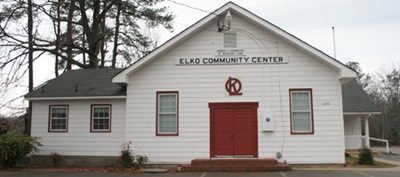
Join us for our first quarterly meeting scheduled for 2:30 on Sunday, March 2nd. The location is the Elko Community Center, located at 6216 White Oak Road in Sandston, VA 23150.
Sandy Fischer will speak on the history of the Danish and Norwegian settlement in the area and the Windsor Club of Elko.
Photo courtesy of Government of Henrico County, VA.
>Back to Top<
Make-do's From an Earlier Age Show a Society that Believe in - If It's "Broke" - Fix It
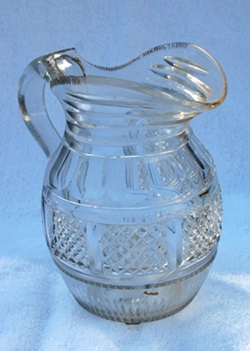
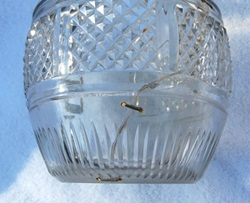
Rivet repair. In the left picture, a crack extends from just below the lip of the cut glass pitcher, around the base to the handle in the back, but small rivets set into the glass stabilize the piece. The image below it gives a close-up of the two bottom rivets and the holes filled with plaster of Paris in which they are anchored.
There is something almost ethereal about glass-delicate, yet strong, a sort of paradoxical solid liquid that plays with the light that strikes it. And among the other objects in the antique shop, light played on and prismed through an early nineteenth century Anglo-Irish cut glass pitcher. But its innate beauty was only half its attraction because crossing the fracture that extended from its lip around its base to the handle were seven small staples or rivets holding it together. Here was an apparently much loved object-damaged but not discarded, saved and painstakingly repaired-not tossed and replaced as we might do today.
The process of repairing this pitcher, known as a “makedo” in collecting circles, is quite interesting, and from Victorian times up until World War II when superior adhesives were developed, riveting or stapling held together the pieces of once treasured but broken glass, porcelain and pottery. Certainly, adhesives were used in earlier times, and the concoctions seem rather odd to the modern ear. They were often composed of sticky organic matter and could include isinglass, gelatin, egg or cheese. George Nathan Maynard, curator of Safron Walden museum during the last decade of the nineteenth century described one such recipe: "Powder of Suffolk cheese dried powdered and sifted, unslaked lime in powder. Mix equal parts with hard water, cold on a slab till stringy. It is then ready for use. Put on each side of the broken edges and hold before the fire till it sets and in five hours it is done. N.B. the more cheese the stronger it is. Boil the cheese to get the fat out."
A glue made of small pieces of orange shellac melted with yellow resin would be used like sealing wax, but it was darker and could stain porcelain. Riveting provided a much more secure but complicated manner of repair. The repairer required a number of special tools including a drill, diamond sparks (which functioned as bits), files (one sharp pointed used as a starting tool), rounded wire that was flat on one side, pliers, hammer and superfine plaster of Paris and soldering materials.
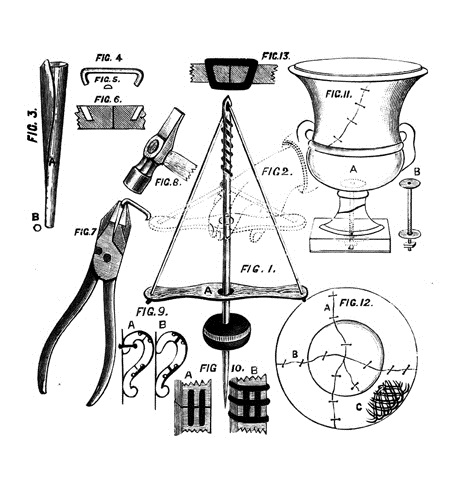
To start, broken pieces were aligned, marks for drilling were made about a quarter of an inch on each side of the break in a line perpendicular to the crack, and a starting spot was scratched with a pointed file. Then a diamond "spark" was inserted in the end of a conical tube (fig. 3-above left illustration) fashioned of metal to the size of the spark to hold it in place. The spindle of the drill (fig. 1) was inserted into the tube, and the drilling began by slowly pushing down on the crosspiece of the hand-powered drill. When the holes, drilled at about a thirty-degree angle toward the crack (fig. 6), were deep enough, a rivet (fig. 4 & 7) was shaped out of the flat-sided brass wire. One end was inserted into a hole, and the other end was pulled into place with pliers. Light, careful taps with a hammer drove the rivet home, and solder could be gently applied to coat the wire for preservation. A small dab of plaster of Paris filled the remaining space in the holes, and the piece was completed.
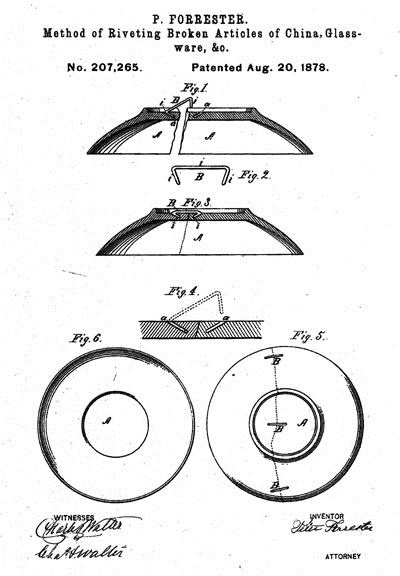
This riveting process was successful enough to gain a patent for Peter Forrester's "Methods of Riveting Broken Articles of China, Glassware, & c." (US207265 A) on August 20, 1878. He included the above right illustration and concluded his application by saying: "I claim as new and desire to secure by Letters Patent-1. The wire clasp B, consisting of the straight portion i and the arms i', one at each end of the said straight part forming therewith an angle of sixty degrees, or thereabout, adapted for use substantially as specified. 2. The combination of a broken china, porcelain, or glass object, A, having holes a at each side of the fracture directly opposite and inclining toward each other, with the clasp B, having arms i having a less inclination than the holes, and adapted to be forced into said holes, as and for the purpose specified."
It was a simple object used to repair a broken piece of china or glassware, and because it was deemed important enough to earn a patent, it illustrates a difference between today and yesteryear. Our society seems to place great emphasis on material things, but when those things break, we more often than not discard and replace them; while those of an earlier age often went to great lengths to repair, preserve and use damaged objects. They truly seemed to value the material things their uses and their associations; perhaps today, we merely value the ownership things. However, there is one thing that is truly valued for itself and for the care and time and apparent love that went into its repair-a cracked Anglo-Irish cut glass pitcher on our dining room table.
Sources:
J. Howorth. The Art of Repairing and Riveting Glass, China and Earthenware. London: Scott, Greenwood & Co., Publishers, 1900.
Lesley Acton & Paul McAuley. Repairing Pottery & Porcelain: A Practical Guide. 2nd Edition. London: A&C Black Publishers Limited, 2003.
>Back to Top<
Tinkers, Their Tools, and Our Language
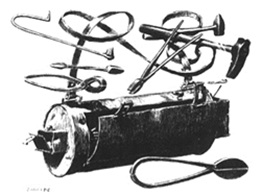
In keeping with the issue's emphasis on repaired items, let us consider the tinker, the traveling handyman who often meant salvation for damaged household items in the eighteenth and nineteenth centuries. He was basically a tinsmith who would arrive in a town with his pig, a metal case like that in the drawing and the photograph. It contained his tools like those seen in the top and bottom illustrations, including hammers, snips, shears, soldering irons and tongs for holding heated items. Quite likely, he also carried a charcoal brazier on his back. He was there to fix leaking vessels, replace handles on implements, maybe recast pewter spoons or even mend larger pewter plates and bowls.

While there are those who think that a our phrase saying that something is not worth a "tinker's damn" arises from a small barrier made by a tinker to contain the run-off of his melted solder, its derivation is probably different.
As a class, tinkers were not known for their polite language. And as the OED says, "The low repute in which these, esp. the itinerant sort, were held in former times is shown by the expressions to swear like a tinker, a tinker's curse or damn, as drunk or as quarrelsome as a tinker, etc."
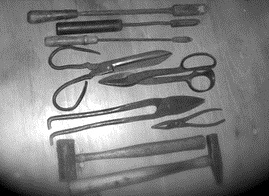
>Back to Top<
Send Us Your Wired, Your Stapled, Your Humble Make-do's Yearning to be Shared
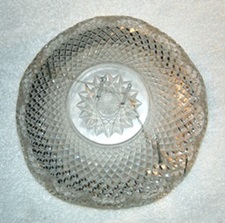
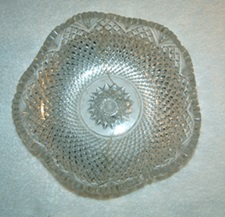
The images above show another repair, or make-do. The cracked crystal bowl in both images was repaired with staples or rivets holding it together on the bottom. Do you have any beloved pieces that have been lovingly but clearly repaired-perhaps a family piece that a long-gone relative put back together?
We would love to see and hear about your pieces of furniture cobbled back together, tools that have been cleverly repaired, any kind of vessel or implement that had been damaged and made useful, or at least displayable, again.
Please send us pictures and brief stories behind your own makedo's so that we can create a gallery of "fixes" in the next newsletter. Email stories and photos to jboehling@verizon.net. We look forward to hearing from you.
>Back to Top<
An Amazing Collection of Repairs
Interior designer, author and television set designer Andrew Baseman of New York has long collected repairs and blogs about them. If you would like to see his extensive collection of repaired items, visit http://andrewbaseman.com/blog/. You will be amazed.
>Back to Top<
Henrico County Jail, 1861

The Saturday, November 2, 1861 edition of Harper's Weekly featured the above woodcut on its cover. The magazine said that it was "an illustration of HENRICO COUNTY JAIL, at Richmond, Virginia, where some Union prisoners have been confined. Our picture is from a sketch made by a prisoner who had been four months shut up in this jail, and who has lately made his escape. He describes the sufferings of the prisoners as severe, the food bad, and the treatment generally cruel." The article concluded by saying, "When the war is over, this County Jail will take rank in history with the British prison-ships and the dungeons of the Revolution."
>Back to Top<
Mary Randolph's Oyster Soup
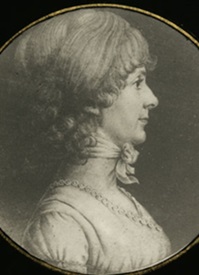
Food and its preparation gives us insight into a culture, and Mary Randolph's The Virginia Housewife Or, Methodical Cook can tell us a good deal about early nineteenth century Virginia culture. We will be printing various early Virginia recipes in coming issues and invite you to adapt them to your kitchen. What better way to start than with oysters-a famous Virginia food.
Wash and drain two quarts of oysters, put them on with three quarts of water, three onions chopped up, two or three slices of lean ham, pepper and salt; boil it till reduced one-half, strain it through a sieve, return the liquid into the pot, put in one quart of fresh oysters, boil it till they are sufficiently done, and thicken the soup with four spoonsful of flour, two gills of rich cream, and the yelks [sic] of six new laid eggs beaten well; boil it a few minutes after the thickening is put in. Take care it does not curdle, and that the flour is not in lumps; serve it up with the last oysters that were put in. If the flavour of thyme be agreeable, you may put in a little, but take care that it does not boil in it long enough to discolour the soup.
>Back to Top<
Now You Know
Before laser printers there was letterpress.
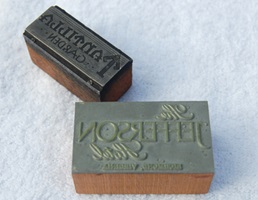
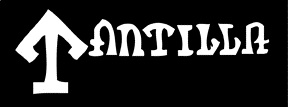
The two items from our last "What Do You Know?" were printing blocks. In fact, they were blocks for local institutions of some note-Tantilla Gardens, the ballroom on Broad Street that is now gone and the Jefferson Hotel. Both blocks were used in letterpress printing, where paper was forced down directly on the frame of composed type and image blocks. The blocks are backwards in order to register forwards on the paper. The Jefferson block has raised lettering in order to render the text in ink. The lettering on the Tantilla block, however, is recessed which would result in type being reversed out on a colored background like this:
The schematic diagram at the bottom shows how the letterpress worked. The type and blocks were locked into the forme on the bed. The type was inked. by hand in older times or by a mechanized roller in newer times. The paper was placed or fed onto the type, the platen pivoted down to force the paper against the type and the page was printed.

>Back to Top<
What Do You Know
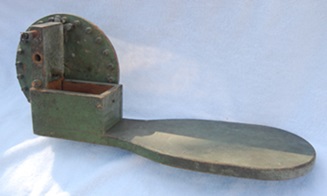
The pictured at the left is 26" long, and the flat part at the back is 8" wide. The wheel is 10" in diameter. It is made of wood and painted green. The axle extending out at the top turns as the wheel turns the star-shaped metal piece at the top. It has prongs that have been bent over but should be straight.
Do you know what it is?
Email your answers to:
jboehling@verizon.net.
>Back to Top<
News 2014: First Quarter
Second Quarter | Third Quarter | Fourth Quarter
Home | Henrico | Maps | Genealogy | Preservation | Membership | Shopping | HCHS
|











